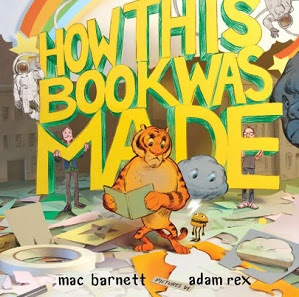Cherchez La Femme! Hug It Out! (Big Nate by Lincoln Pierce
 Big Nate, the middle schooler class slacker, is plugging his way through sixth grade, complaining that his teacher Mrs. Godfrey's loud voice is keeping him from sleeping in class. And that's not ALL! His friend Francis is still a fount of annoying trivia facts, his grandparents volunteer to chaperone the field trip to the museum, and the class pet, Sherman the Hamster, is still sulking sarcastically under his shavings.
Big Nate, the middle schooler class slacker, is plugging his way through sixth grade, complaining that his teacher Mrs. Godfrey's loud voice is keeping him from sleeping in class. And that's not ALL! His friend Francis is still a fount of annoying trivia facts, his grandparents volunteer to chaperone the field trip to the museum, and the class pet, Sherman the Hamster, is still sulking sarcastically under his shavings.
"YOU'RE SO LUCKY, SHERMAN. YOU DON'T HAVE TO GO TO SCHOOL LIKE WE DO.
NO TESTS, NO HOMEWORK, NO SCREAMING TEACHERS..."
(AND A 4-YEAR LIFESPAN.
SHUT UP, KID.)
Big Nate gets to catch up on his napping when he gets beaned in a baseball game, but then Mrs. Godfrey does more than keep Nate from snoozing in class. His conference with her scares him sleepless!
"I'M SURE YOU'RE AWARE, NATE THAT YOU'RE IN DANGER OF NEEDING TO ATTEND SUMMER SCHOOL. I'D SAY SOME TUTORING IS IN ORDER BEFORE THE FINAL EXAM.
I'LL SELECT YOUR TUTOR."
And so Big Nate finds his fate is in the hands of his arch-nemesis, GINA, the most annoying know-it-all in the class. Will a late spring cram session save Big Nate's summer?
Against the odds, his tutor Gina pulls it off and Big Nate makes a 94 on the final exam. School's out and Nate is free to be... a summer slacker!
But fate steps in at... of all places, at the amusement park, where Francis loses his lunch on the UPCHUCKER, and Nate finds himself paired on THE FLAMETHROWER with a girl--a girl he's never seen before... and...
SHE'S WICKED CUTE!
Big Nate is IN LOVE, but the cute girl disappears into the crowd before Nate can even find out her name, and now his summer vacation suddenly has MEANING and PURPOSE, in Lincoln Pierce's Big Nate: Hug It Out! (Volume 21)
Labels: Graphic Novels, Middle School Stories, Wit and Humor (Grades 3-7)




















